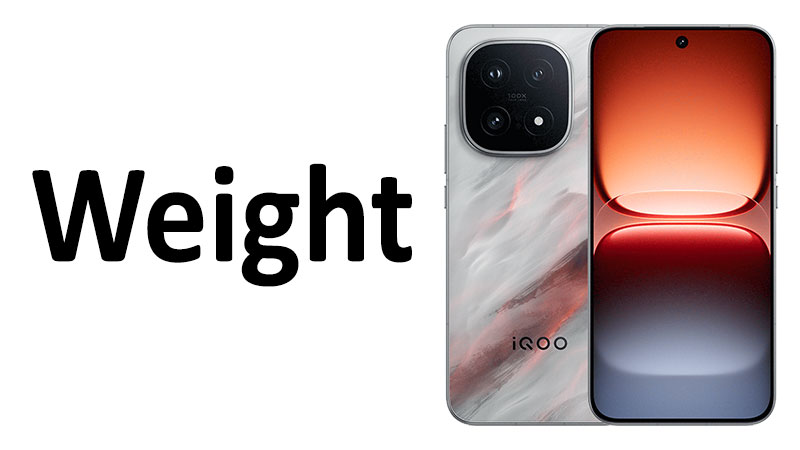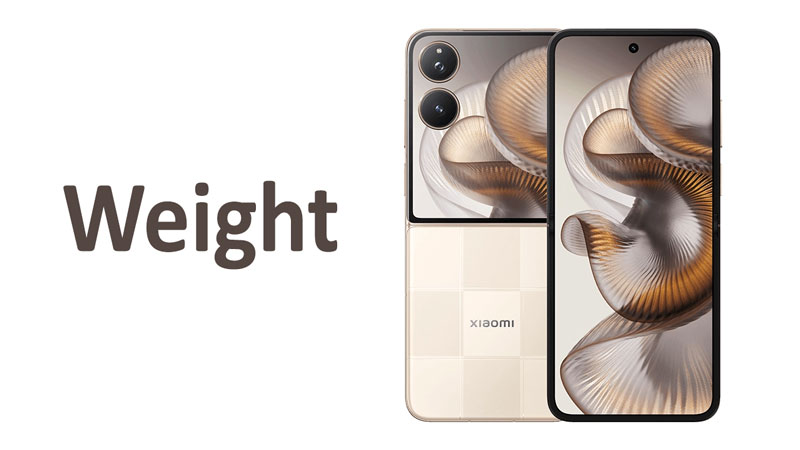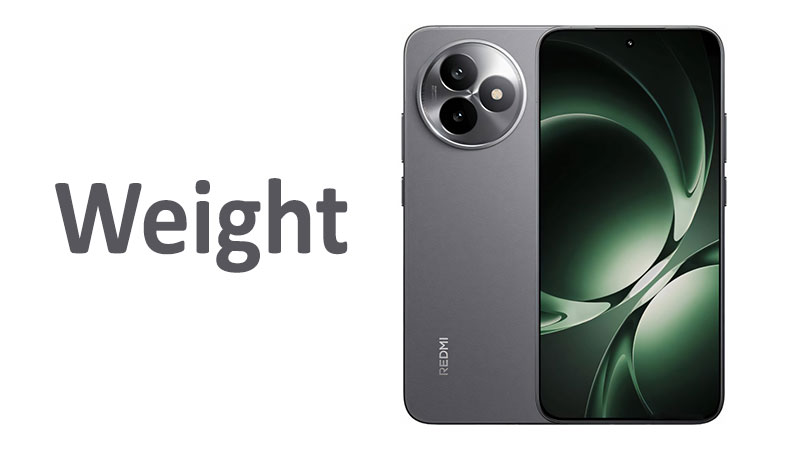The vivo iQOO 15 weight is a crucial specification for serious smartphone users. Weight impacts device ergonomics and daily usability significantly. This article provides a comprehensive analysis of the iQOO 15’s mass. We examine the specific grams and ounces measurements. Furthermore, we explore how its weight compares to rivals. Understanding the weight is essential for assessing its flagship status. It also helps determine the phone’s overall comfort. This deep dive aids potential buyers in making an informed decision.
The Physical Specification: vivo iQOO 15 Weight in Detail
The iQOO 15 presents a dual weight profile depending on the material chosen. This variation is common among modern flagship devices. Buyers need to pay close attention to the specific model they select. The weight difference is small but noticeable in the hand.
Precise Weight Measurements
The lighter variant of the vivo iQOO 15 weighs approximately 215 grams. This corresponds to about 7.58 ounces. This model typically features a glass back or a specific alloy frame. The heavier variant tips the scales at around 220 grams. This translates to roughly 7.76 ounces.
The 220-gram version often includes a ceramic back panel. Alternatively, it might use a vegan leather finish with a thicker frame. The 5-gram difference seems minor on paper. However, it affects the phone’s balance and grip. This dual-weight approach offers choice to the consumer.
The most commonly cited weight range is 215 g to 220 g (7.58 oz). Both measurements place the iQOO 15 firmly in the heavy flagship category. This mass is a direct consequence of its advanced components. We will discuss these components in later sections.
Factors Contributing to the Heavy Weight
Several hardware elements contribute to the substantial vivo iQOO 15 weight. Flagship phones usually pack large batteries and extensive camera systems. The iQOO 15 is no exception to this trend. These components inevitably add mass to the device.
A large battery capacity is the primary contributor. High-end devices require big batteries to support powerful processors and fast displays. The iQOO 15’s battery likely exceeds 5,000 mAh. This lithium-ion cell adds significant weight.
The advanced cooling system also adds internal mass. The iQOO 15 uses a large vapor chamber or complex graphite sheets. These systems manage heat generated during peak performance. Proper cooling is vital for sustained gaming. These metallic and liquid components increase the overall weight.
Finally, the build materials play a role. The phone uses an aerospace-grade aluminum frame. This provides necessary structural integrity. The use of premium glass or ceramic on the back is also dense. These materials contribute to the phone’s premium feel and weight.
Ergonomics and Hand Feel in Daily Use
The sheer physical mass of a phone dictates its user experience. The vivo iQOO 15 weight impacts everything from single-handed scrolling to extended gaming sessions. Ergonomics is more than just dimensions; it is about weight distribution.
Single-Handed Usability
At over 215 grams, the iQOO 15 is challenging for single-handed use. Users with smaller hands will find it cumbersome. Extended use without a secure grip can cause fatigue. The weight also places stress on the pinky finger when supporting the base.
However, the weight can also provide a sense of security. It gives the phone a perceived robustness. The weight requires conscious effort to hold securely. This helps prevent accidental drops for some users. The center of gravity is crucial for balance.
Impact on Gaming Experience
The heavy weight is often beneficial for serious mobile gamers. The mass provides stability during intense gameplay. The phone feels planted in the hands during rapid movements. This reduces accidental shaking or slipping.
The weight distribution is likely optimized for landscape orientation. This ensures comfort when holding the device with two hands. The gaming focus justifies the need for robust internal cooling. This cooling system, while heavy, allows for peak performance. Gamers often prefer a slightly heavier device for this stability.
Pocketability and Portability
The iQOO 15 is large and heavy. It may feel bulky in standard trouser pockets. Tighter clothing might make the phone print noticeable. Its substantial mass is something commuters should consider.
The total package, including a protective case, adds even more weight. A heavy-duty case could push the total weight near 250 grams. This reduces the phone’s overall portability. Users seeking a light, thin device should look elsewhere. The iQOO 15 prioritizes performance and battery over minimal weight.
Specialized Comparisons with Flagship Competitors
Placing the vivo iQOO 15 weight in context requires comparison with its rivals. Its mass profile is similar to other performance-focused phones. We compare it to various flagship categories. This helps identify where the iQOO 15 stands in the market.
Comparison with Previous iQOO Models
The iQOO series generally favors performance and battery life. This means they are rarely the lightest phones. The iQOO 14 likely featured a similar or slightly lighter construction. A marginal increase in weight suggests meaningful hardware upgrades.
If the iQOO 14 weighed around 205 grams, the iQOO 15 is about 10–15 grams heavier. This extra mass is likely due to a larger battery or enhanced cooling. The increase is justified by improved performance capabilities. Buyers upgrading from the iQOO 14 should notice a slight difference in heft.
Comparison with Ultra Flagships (Samsung/iPhone)
The iQOO 15 competes directly with Ultra and Pro Max devices. The Samsung Galaxy S Ultra models typically hover around 225 to 235 grams. Similarly, the latest iPhone Pro Max devices often exceed 220 grams.
The iQOO 15 is slightly lighter than these top-tier rivals. This small reduction in weight is an advantage. It provides comparable performance without the absolute maximum weight. The iQOO 15 strikes a good balance between size and mass. It offers a powerful build without becoming overly cumbersome.
Comparison with Standard Flagships
Standard flagship models are usually lighter. Phones like the base Samsung Galaxy S model often weigh below 200 grams. Devices in the 180-gram range focus on portability and slim design. The iQOO 15 is significantly heavier than this category.
Its high vivo iQOO 15 weight signals its specialized nature. It is not designed for the general market seeking portability. It targets users who prioritize sustained performance and endurance. The extra mass is a necessary compromise for power users.
Pros and Cons of the iQOO 15’s Mass
The heavy nature of the iQOO 15 creates specific advantages and disadvantages. These points are essential for a holistic understanding. They help buyers decide if the mass suits their lifestyle. Every feature, including weight, involves trade-offs.
Advantages of the vivo iQOO 15 Weight
The considerable mass provides an extremely secure hand feel. This reduces the perception of cheapness or fragility. A heavier phone often feels more robust and durable. This is due to the dense, high-quality materials used.
The heavy weight is a side effect of its large battery. Users gain extended battery life as a result. This improved endurance is a significant practical benefit. Gamers and heavy media consumers will appreciate this trade-off.
Furthermore, the mass is often linked to better cooling efficiency. Heavier phones can dissipate heat more effectively. This ensures the iQOO 15 maintains peak performance for longer. The phone avoids thermal throttling during intense use.
Disadvantages of the vivo iQOO 15 Weight
The most obvious drawback is user fatigue. Prolonged use, such as reading or social media scrolling, can tire the wrist. This limits comfort during long sessions. Single-handed use is especially difficult.
The weight also increases the risk of damage upon dropping. Greater mass translates to higher impact force upon hitting the ground. A heavy phone is more likely to suffer screen or chassis damage. A sturdy case is highly recommended for protection.
Finally, the sheer bulk impacts portability. The phone is less comfortable to carry in light clothing. Its size and weight make it less convenient for active users. The user must constantly be aware of its presence in a pocket.
Key Insights for Potential Buyers
Buyers should not view the vivo iQOO 15 weight in isolation. They must consider its mass as part of the total performance package. Understanding the hardware trade-offs is crucial. These insights will help align the phone with user needs.
Prioritize Performance Over Portability
The iQOO 15 is explicitly a performance flagship. The 215g to 220g weight range is non-negotiable for its feature set. Users who prioritize light weight should look at thinner, non-gaming models. Expect high performance and long battery life in exchange for the mass.
Do not purchase this phone expecting a sleek, feather-light device. Accept the weight as a mark of its internal power. The weight confirms the presence of superior cooling and battery technology. These features make it ideal for power users.
Evaluate Personal Ergonomics
Users must seriously assess their comfort levels with heavy phones. If you frequently hold your phone above your head, consider the fatigue factor. If you primarily use your phone with two hands, the weight is less of an issue.
It may be beneficial to handle similar-weight demonstration units. Try holding a device in the 220-gram range for 15 minutes. This simple test helps gauge long-term comfort. The heavy weight can be polarizing for different users.
Material Choice Impacts Mass
Remember the weight variation is tied to the back panel material. The 215g variant is likely the lightest possible configuration. The 220g version offers potentially more durable or luxurious materials. Buyers should check the specific material construction when purchasing. They can then select the weight that best suits their preference.
The difference of 5 grams is subtle but measurable. Some users prefer the feel of the heavier, ceramic back. Others will choose the lighter glass version for marginal comfort gains. The material choice is a direct factor in the final mass.
Conclusion
The vivo iQOO 15 weight, ranging from 215 g to 220 g (7.58 oz), defines its position. It stands as a premium, performance-focused flagship device. This substantial mass is not accidental. It is the result of deliberate engineering choices. These choices include a massive battery and an advanced cooling system.
The weight profile places it among the heaviest top-tier phones. It slightly undercuts the mass of Ultra models like the Samsung Galaxy S Ultra. This makes the iQOO 15 a slightly more manageable powerhouse. The mass offers stability and a durable feel.
However, the weight introduces compromises in portability and long-term comfort. Buyers must accept the trade-off for superior performance and endurance. For mobile gamers and heavy users, the weight is a positive guarantee of power. For those seeking maximum portability, the iQOO 15 may feel too heavy. Ultimately, the iQOO 15 is an excellent choice for power-focused buyers who value sustained performance above a light build.
FAQ
What is the precise weight of the vivo iQOO 15?
The vivo iQOO 15 weight ranges between 215 grams and 220 grams. This depends on the specific back panel material used.
Why is the iQOO 15 heavier than some other phones?
It is heavier due to its large battery, extensive cooling system, and premium, dense build materials like metal and ceramic.
Does the weight of the iQOO 15 affect gaming performance?
No, the weight can actually improve gaming stability. The mass helps the phone feel more secure during intense, two-handed use.
Is the 215g or 220g weight more common?
Both are common as they relate to different design variants. The 215g model is typically the lighter glass version.
How does the iQOO 15 weight compare to the iPhone 15 Pro Max?
The iQOO 15 is generally similar to or slightly lighter than the latest iPhone Pro Max models. These devices also prioritize performance over minimal weight.



